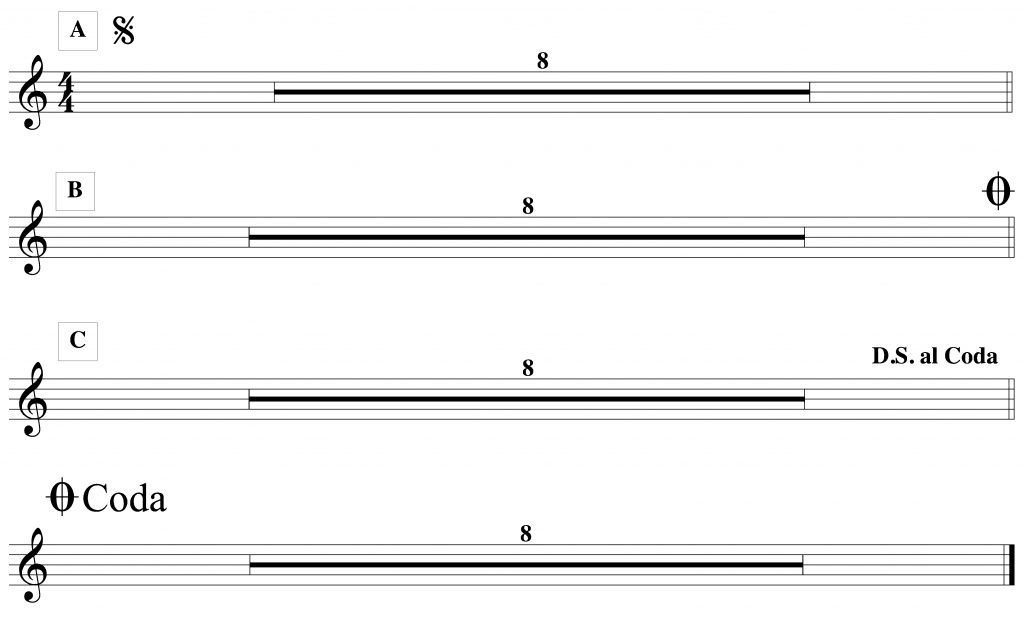6 Repeats
There are a variety of symbols used in music that allow a section or sections of music to be repeated. The simplest are repeat signs. Placed on the staff and the beginning and end of the repeated section, using repeats signs allows for a section to be repeated as many times as needed.

While the default is to play the repeated section two times total, when indicated properly, repeat signs can be used to repeat a section as many times as needed or desired.
In many cases, a repeated section may differ slightly at the end of the phrase. When this occurs, repeat signs with first and second endings can be used.

In the example above, the first four bars are performed, then the first three bars are performed before jumping to the second ending.
D.S. and Coda symbols are used to repeat large sections of music and when repeat signs can’t be used or have already been used within the desired repeated section. DS, which is short for Dal Segno, means to go to the sign (![]() ). After the performer has jumped back to the sign, there are numerous options for how to proceed from there.
). After the performer has jumped back to the sign, there are numerous options for how to proceed from there.
D.S. al fine means go back to the sign and play until you see the word fine, which means finish.
D.S. al coda means go back to the sign until you arrive at the coda bug, then jump to the new section labeled with another coda bug and the word Coda.

The last type of repeat you will see is D.C., which is an abbreviation for Da Capo, meaning go back to the start of the piece. Similar to D.S., D.C. can be paired with a fine or a Coda to allow for any type of repeat.
Go to the sign.

